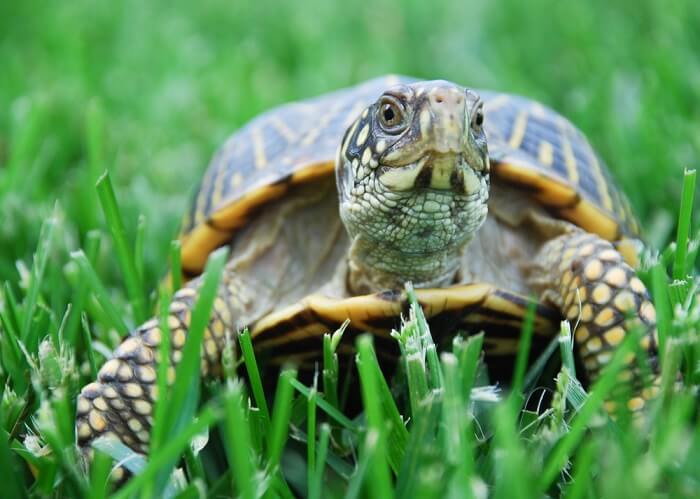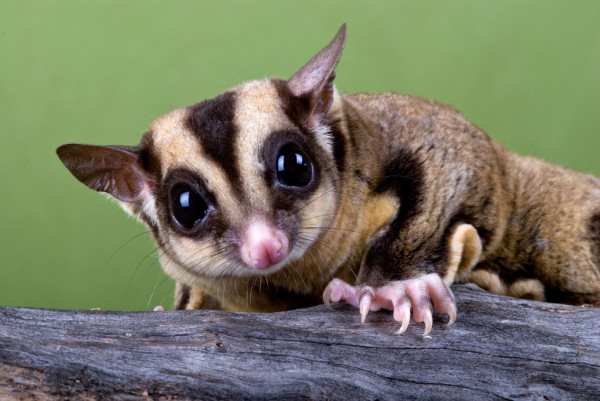10 Reasons Why Pet Turtles Make Great Pets
This page contains affiliate links. We may earn money or products from the companies mentioned in this post through our independently chosen links, which earn us a commission. Learn More
When you think of your ideal pet, do you picture a fluffy animal with pointed ears and a tail? Cats and dogs are the top two most popular pets, but they are far from the only options. If you’re looking for something unique and you’re willing to do a little research, you might consider a turtle.
There are many different species of turtle that can be kept as pets, and they come in more colors and patterns than you might imagine. Not only can turtles be quite beautiful, but they offer an excellent opportunity to learn about a new species.
Pet turtles can certainly be wonderful, but their care does present some challenges. If you think you’re up to the task, here are 10 reasons turtles make great pets:
#1. Pet Turtles Can Live On Land Or In Water.
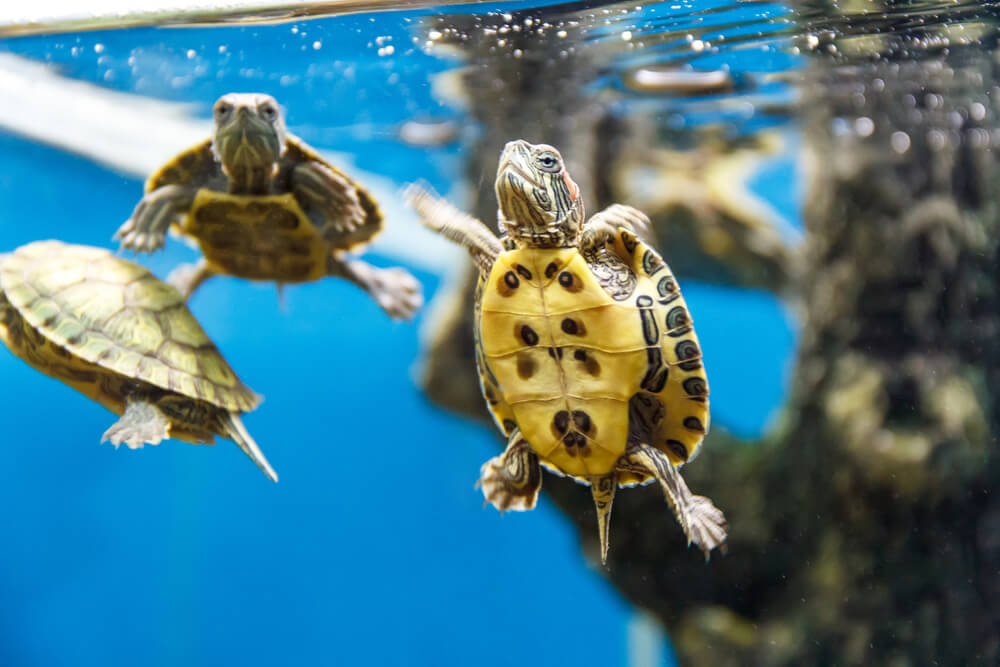
Turtles are a unique group of reptiles and they can be found all over the world. If you’re looking for a land-dwelling pet, a terrestrial turtle species like the box turtle or wood turtle could be a good choice. For an aquatic pet, consider the red-eared slider or the painted turtle.
What makes turtles such unique and interesting pets is that there is such a variety to choose from. Owning a turtle gives you the opportunity to recreate a natural habitat right in your own home.
Along with that opportunity, however, comes a fair bit of time, effort, and money, however. Make sure you’re willing to make the commitment to your turtle’s care before you bring one home.
#2. Their Enclosure Is All The Space They Need.
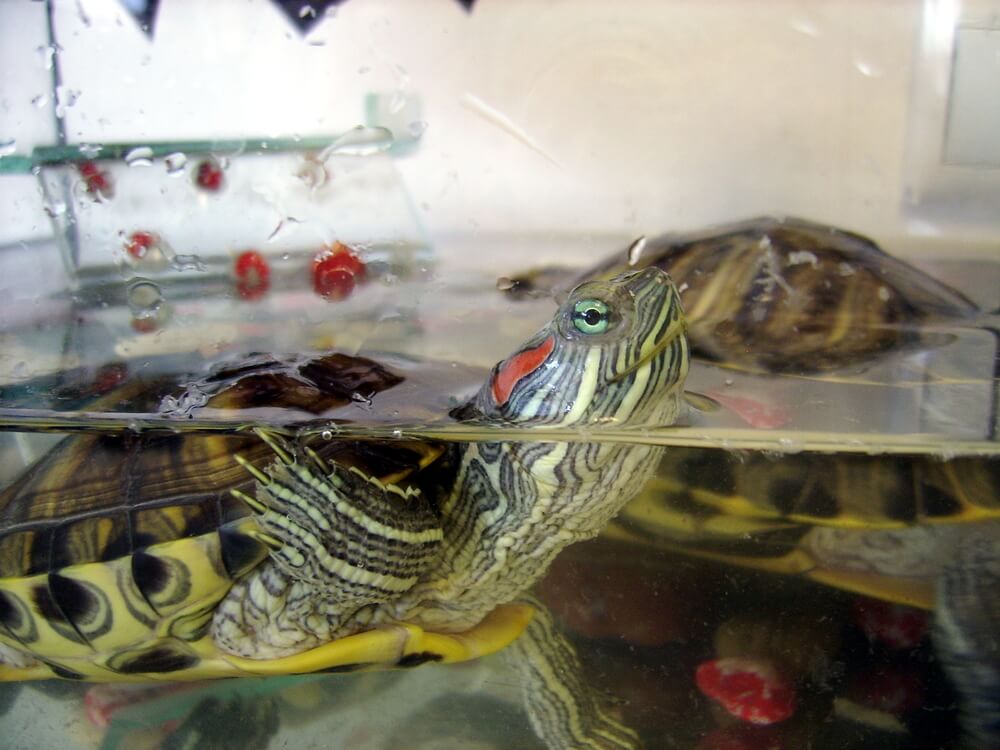
While many pets like dogs and cats need the freedom to roam about the house, most turtles are content to spend their time in their enclosure. Because your turtle will be spending most of his life in this habitat, however, it becomes even more important to choose the right turtle tank.
Turtles require larger cages than you might expect. Even a small aquatic turtle may require a tank 100 gallons or larger. Do your research on the type of turtle you plan to get to familiarize yourself with the species’ habitat requirements. You may also want to do yourself a favor and invest in a larger tank upfront for your pet turtle to grow into rather than having to upgrade as the turtle grows.
If you’re considering a terrestrial turtle, think about finding a terrarium that is long and wide rather than tall. Turtles don’t tend to climb as much as other reptiles, so it’s best to provide plenty of floor space. Having a shorter tank will also be a benefit when it comes to heat lamps – the heat won’t have to travel as far to reach your turtle, so you may be able to get away with a smaller lamp.
#3. Pet Turtles Are Relatively Low Maintenance.
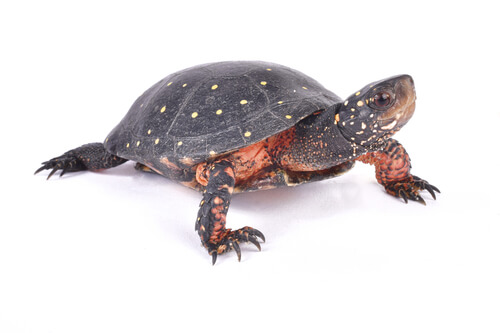
There is a significant amount of planning and setup that goes into being a turtle owner, but once you have your pet’s habitat set up it’s all about maintenance. Pet turtles need access to fresh water and healthy food, but most do well with a single daily feeding and turtles don’t require as much human interaction or attention as other pets.
When it comes to keeping your turtle’s tank clean, your tank equipment will do some of the work for you. For aquatic turtles, you’ll need to equip your tank with a filtration system which will help keep the water clean. More physical cleanup may be required for a terrestrial turtle or tortoise, but cold-blooded animals like turtles don’t tend to produce as much waste as warm-blooded animals.
The best thing you can do as a turtle owner is establish a routine for feeding your turtle and cleaning his tank. Once you get used to the routine, you won’t find it particularly difficult or time-consuming to maintain.
#4. Turtles Do Not Shed Or Require Grooming.
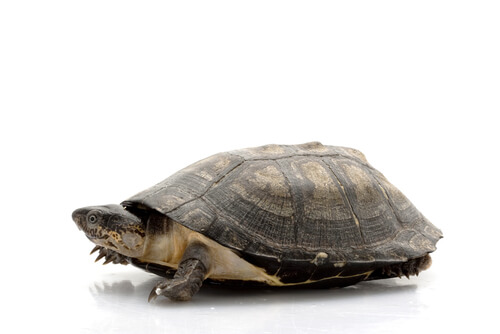
Another benefit turtles have over traditional pets is that they don’t shed and you don’t have to worry about grooming. Their lack of fur can also be a benefit for people who suffer from pet allergies. Your pet turtle won’t need to be brushed or bathed, but you may need to do some work now and then to keep its skin and shell healthy.
The best thing you can do to keep your turtle’s shell healthy and strong is to provide a balanced diet and plenty of sunlight (or full-spectrum artificial light). Turtles require essential vitamins and minerals (particularly calcium) as well as exposure to UVB light to keep their shells in good shape.
#5. They Don’t Make A Mess Outside Their Habitat.
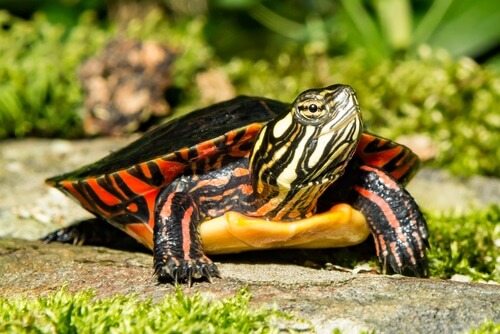
Your pet turtle’s tank is its world. This makes it all the more important to choose and equip it wisely, but it also means you don’t have to clean up your turtle’s mess around the rest of the house. Cats and dogs have a tendency to shed all over the furniture and they can make quite a mess. You won’t be picking up after your turtle in the backyard or scooping a litter box.
While your turtle’s mess may be confined to its tank, it’s still your responsibility to make sure your turtle has a clean place to live. For terrestrial turtles, this may require daily spot cleaning and a more thorough cleaning of the tank a few times a month. For aquatic turtles, your filtration system will do most of the work but you’ll still need to change the filter media, clean the filter, and sanitize the other pieces you use in the tank to maintain a safe and healthy environment for your pet.
#6. Turtles And Tortoises Have A Long Lifespan.

On average, pet turtles live 20 years or more. If you’re looking for a pet you can spend a lifetime getting to know, the turtle is the perfect option. On the other hand, if you’re not sure you’re willing to commit several decades to caring for your new pet, the turtle might not be right.
The best thing you can do to maximize your turtle’s lifespan is to provide a healthy diet. Turtles are omnivores, so you should create a blended diet of fruits, vegetables, insects, fish, and commercially balanced turtle food to meet your turtle’s needs.
It’s also important to make sure your turtle has access to routine veterinary care. Though your turtle may not require annual vaccinations, turtles can be prone to nutritional deficiencies, parasites, bacterial infections, and other issues which may require veterinary care. Do yourself a favor and find an exotics or reptile vet before you bring your turtle home, so you know you have somewhere to take him if it becomes necessary.
#7. They Will Accept A Wide Variety Of Foods.
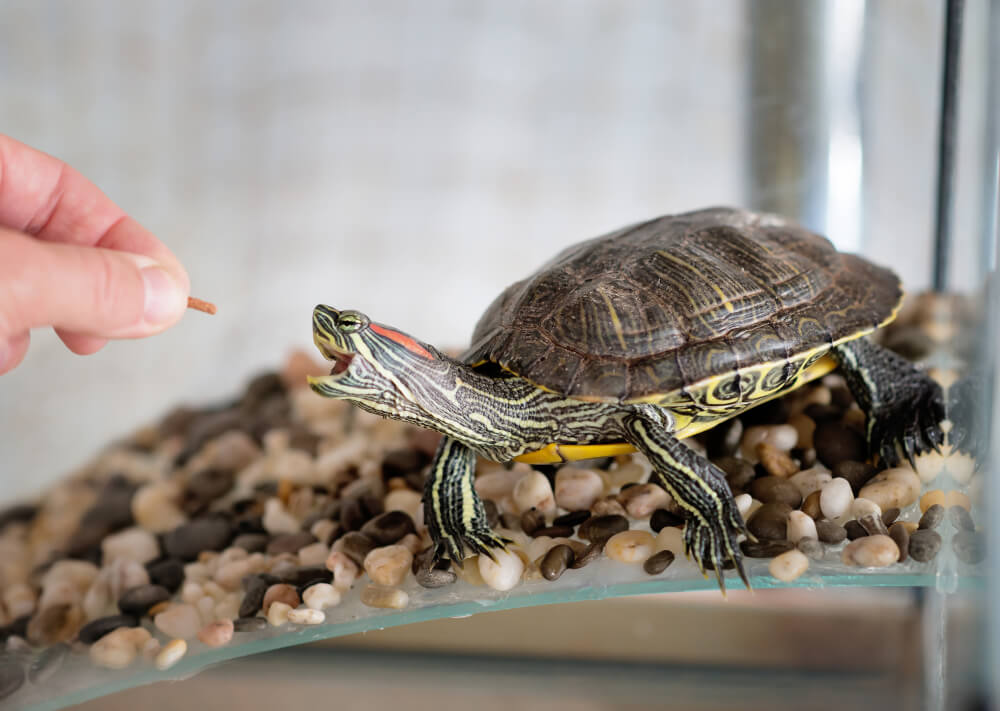
Turtles are generally not picky eaters. Unlike tortoises which are strict vegetarians, turtles are omnivores and will eat a wide variety of foods. It’s a good idea to create a balanced diet for your turtle using a commercial turtle food to provide the right blend of nutrients, but you’ll still need to provide fresh foods like fruits, vegetables, and insects on a regular basis.
In some ways, you can almost use your turtle as a replacement for your garbage disposal. Your turtle will be glad to accept the stems and scraps of veggies leftover from dinner preparation.
#8. Pet Turtles Can Learn To Recognize Their Owners.
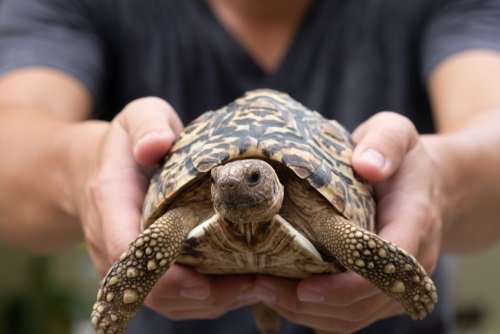
You shouldn’t expect your turtle to beg you for attention when you walk in the door, but these reptiles do have the capacity to recognize their owners by sight and by voice. Turtles aren’t always the most affection of pets and many do not like being handled, but you’ll come to learn your turtles personality over time and you’ll develop a bond with it as well.
#9. There Are Many Different Species To Consider

Turtles can be found on all continents except Antarctica on land and in both fresh water and salt water. All told, there are over 350 species of turtle, though most of them are not considered suitable for pets.
Here are the top 10 species of pet turtle:
- Painted turtle (Chrysemys picta)
- Red-eared slider (Trachemys scripta elegans)
- Common snapping turtle (Chelydra serpentina)
- African sideneck turtle (Coenobita brevimanus)
- Eastern box turtle (Terrapene carolina carolina)
- Mississippi mud turtle (Graptemys pseudogeographica)
- Spotted turtle (Glemmys guttata)
- Common wood turtle (Gleptemys insculpta)
- Reeve’s turtle (Mauremys reevesii)
- Common musk turtle (Sternotherus odoratus)
Not only are there many different species of turtle to choose from, but you can choose from terrestrial (land-dwelling) or aquatic (water-dwelling) species. Both options have specific habitat requirements and need additional equipment like heat lamps, water filters, and more. Either type will also need a very large enclosure, so do your research to make sure you make the right choice of turtle.
#10. Pet Turtles Can Be A Learning Experience
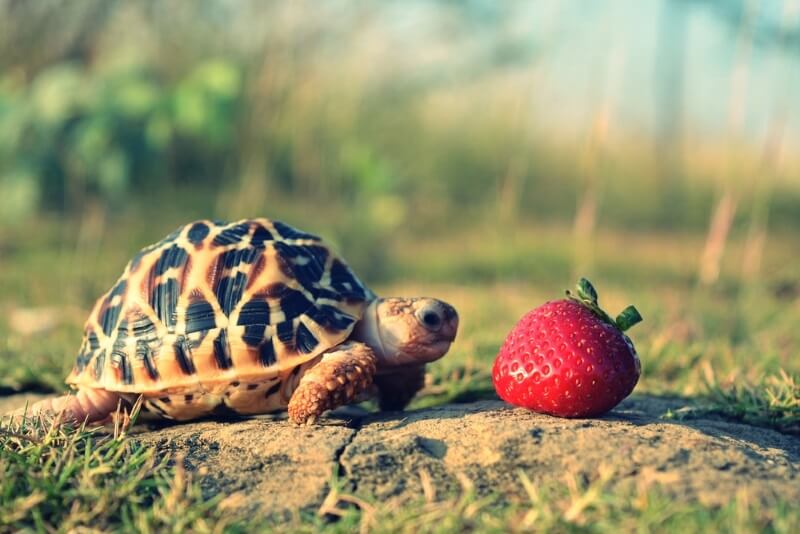
Keeping a pet turtle can be challenging at times, but once you come to understand your new pet’s requirements, you’ll find there’s a lot to learn. Reptiles are very different from traditional pets like cats and dogs, so you’ll always be entertained by your pet turtle. If you’re looking for a unique experience as a pet owner, a turtle will certainly provide that for you.
Is A Pet Turtle Right For You?
Though a turtle may seem like a low-maintenance pet, that isn’t always the case. Turtles may not require as much interaction as some pets, but their habitat requirements and dietary needs can be challenging for an inexperienced pet owner to meet properly.
Before bringing home a pet turtle, it’s important to do your research to know what you’re getting into. Aside from the care requirements for a pet turtle, you should also know that turtles can carry salmonella and they have surprisingly long lifespans.
Unless you’re willing to make a long-term commitment to caring for your turtle and you’re able to take safe handling precautions, the turtle may not be the right pet for you.
Caring for a pet turtle can be a challenge, but it can also be quite rewarding. These animals are very interesting, and some species can be quite active and entertaining. Just be sure to think carefully about what type of turtle you want to get and make sure you’re prepared to care for it well.
As a final note, never take in a wild turtle as a pet.
Wild turtles may not do well in captivity, and there may be a higher risk of it carrying salmonella. It’s best to get your turtle from a pet shop or a breeder – avoid tourist shops if you live in an area where turtles are common. You should also check local regulations to see if there are restrictions on the size or species of turtle you’re allowed to keep as a pet.
Frequently Asked Questions
Do turtles or tortoises make better pets?
It really depends what you’re looking for. Both have specific habitat requirements and need additional equipment such as heat lamps and water filters. Think about how much space you have to dedicate and what level of care you’re willing to provide.
Do pet turtles bite?
Turtles can bite if they feel threatened or frightened. This is truer with wild turtles than pet turtles that have been properly tamed, but it can still happen.
Do turtles get attached to their owners?
Turtles have the capacity to bond with their owners and can learn to recognize them as well. That being said, they do not bond to humans in the same way a dog or cat would.
Do turtles recognize you?
Yes, turtles can learn to recognize their owners by sight and by the sound of their voice.
Do turtles like to be held?
No. Turtles are generally not the most affectionate pet and may not like to be held. If you spend enough time interacting with your turtle to form a bond, however, it may be more amenable to handling.






